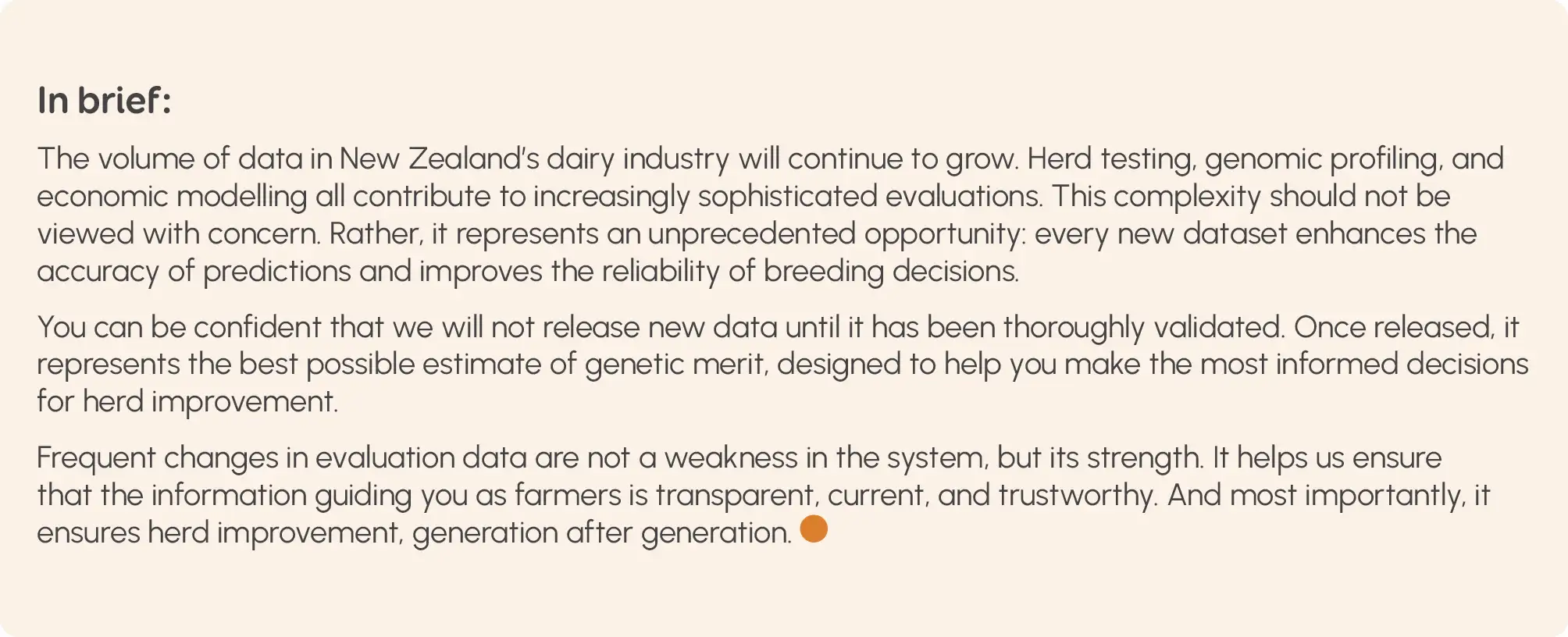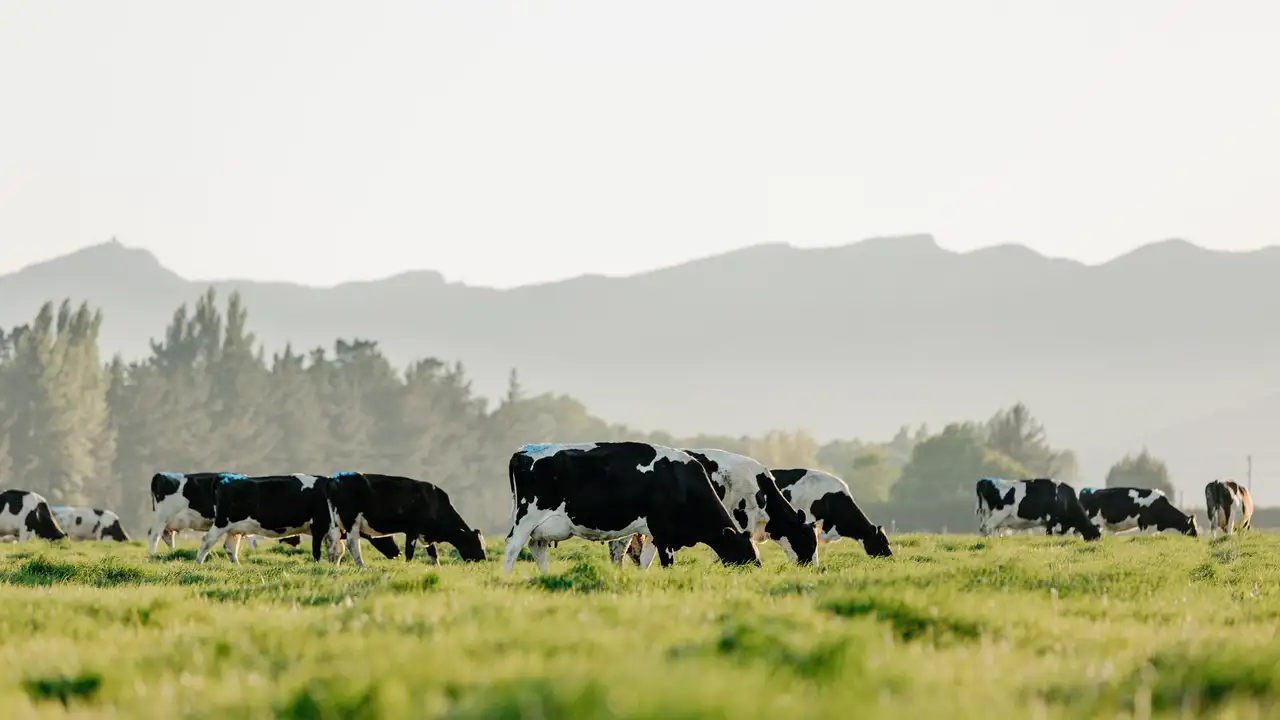To ensure we can support you to make the best herd improvement decisions, it’s important we can supply timely and accurate information to help underpin every breeding decision.
You may notice that breeding values and evaluations change more frequently today than they once did. These changes can sometimes appear confusing, but in fact, they reflect the strength of New Zealand’s evaluation system, a process designed to incorporate the latest information and provide the most robust estimates of genetic merit possible.
At its core, animal evaluation (AE) is the process of estimating an animal’s genetic merit. For cows, this is largely based on their own performance data, such as lactation results. For bulls, estimates are drawn from their progeny and ancestry. These evaluations allow both farmers and LIC to identify the animals most suited for breeding, ensuring continuous improvement of both your herd and the national herd.

In the early 1990s, technological limitations meant that only one or two official AE runs were possible each year. Farmers received a static set of values, updated annually. Today, advances in computational capacity and reduced processing costs allow for approximately a dozen evaluations per year.
This frequency is not about producing more data for data’s sake. It reflects the necessity for current information which allows you to make breeding and selection decisions at key times of the season. For example, as herd testing results become available from September onwards, evaluations ensure that the most promising bulls can be identified quickly and added to the Premier Sires team. Similarly, you can use updated data to make timely decisions on which cows to target with sexed semen or select for replacements.

The introduction of genomics in 2008 marked a fundamental shift in animal evaluation. While herd testing and performance data provide valuable insights, a genomic profile offers a static picture of an animal’s DNA. However, the interpretation of that profile changes as more animals are genotyped and linked with performance data.
Currently, more than 400,000 animals have been both genotyped and herd tested. This year, that number is expected to double to around 800,000. Each additional data point improves the accuracy of the marker effects used in genomic evaluations. As a result, an individual animal’s breeding value may shift even when nothing about its own performance has changed. What is changing is the scientific certainty of the estimate. Animal evaluations are not static truths, but continuously refined estimates based on the best available evidence. More data simply means better predictions.

Another factor influencing animal rankings is the annual recalculation of economic values. Conducted by DairyNZ and NZAEL each December, this process accounts for variables such as milk price, feed costs, and the relative value of fat and protein.
While the underlying breeding values (for traits such as fat, protein, milk volume, liveweight, and fertility) remain unchanged, the weighting applied to each trait is updated to reflect current economic conditions. This ensures that Breeding Worth (BW) reflects the most relevant market realities. Farmers may notice significant shifts in rankings from year to year, but these shifts are necessary to ensure that the evaluation system remains aligned with industry economics.

While stability can appear better, in genetics, apparent stability can mask lost opportunities. If AE results were released only once per year, you could be basing your breeding decisions on outdated information. This could mean selecting animals that no longer represent the best genetic potential, particularly as new herd test results, progeny data, or genomic information become available.
Frequent updates mitigate this risk. Change in breeding values should be seen as evidence of progress: the system is incorporating new data to provide more accurate guidance.

Accuracy is paramount. Each AE run is subjected to multiple layers of quality control before being released into systems such as MINDA. Outputs are checked extensively in the days leading up to release, and staff work through the night to verify that data has uploaded correctly.
When new scientific models are developed, they are typically tested in parallel with existing models for several evaluation runs before being introduced. Only when our scientists are confident in the robustness of the methodology are changes implemented. In some cases, promising developments have been deliberately delayed until the science reached the required standard. This conservative approach ensures that farmers can have confidence that the change they see reflects genuine improvement in accuracy.

As a co-operative, we carry a unique responsibility. Our farmers are both the owners of the organisation and the primary contributors of data. That creates a dual obligation: to safeguard the integrity of the information and to ensure that it is shared as transparently and as promptly as possible.
The long-term commitment of our research and development staff, many of whom have dedicated decades to advancing genetic evaluation, reinforces this approach. There is no benefit in implementing changes prematurely. Genetic progress is a long-term endeavour, and data ultimately reveals whether a system works or not.


